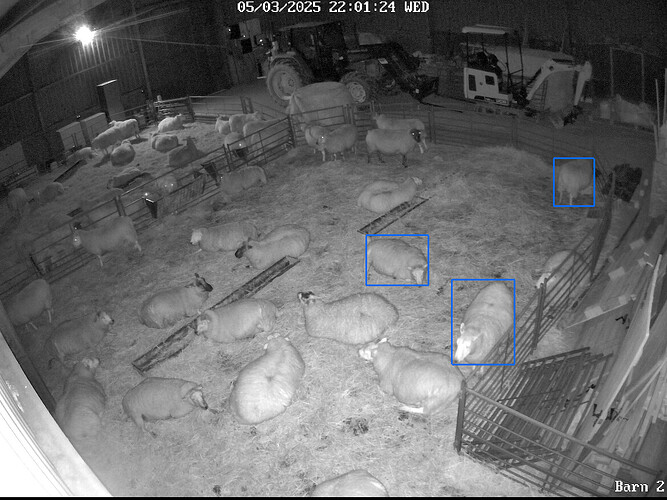I would always use sockets over crimping connectors on the ends, much easier to do.
That’s a really good point and something I didn’t consider. I’ve got some sockets and a punch down Krone tool as well.
Thanks for the idea @sobek, this will also mean the cable ends won’t be disturbed.
I’ve just got to bring myself to cut off the end of the cable I spent yesterday fixing.

One of my former colleagues made an extension lead … he got the reel of cable and fitted a plug, the plugged it in and measured the length of cable that he needed unrolling it from the reel as he went the pulled out some wire cutters an cut the cable…at which point there was a loud bang, sparks, the lights went out and he ruined both a good pair of wire cutters and his underwear… he forgot to unplug the cable ![]()
OUCH!
This reminds me of the external techie that my company brought in to change batteries in our Emergency Power Supply unit for the Eurofighter Simulator in Italy.
Imagine several metal closets full of car batteries connected in series. If not a hundred, then very close to it. A lot.
This guy must have done something wrong when disconnecting them (they needed all to be removed and swapped with new ones) using a ring spanner to unbuckle them.
Somehow the other end of the spanner touched another battery and it shorted everything. The guy was unharmed but I swear to God it was like a Flashbang went off in the room.
The room with the cabinets was smartly a smaller one adjacent to a larger room so me and another colleague of mine were handling tools to the guy from the larger room and were largely unaffected even if quite scared by the whole happening.
The techie was instead very heavily shocked, the spanner fuse between the two batteries and there was a fair bit of thinking and tweaking to resolve the whole stuff.
Oh the stories I could tell about mis-handling, accidents, and unsafety of it all…
That used to happen on the Leopards all the time. Eight truck batteries wired up in series and parallel for 24V and 400A. Four on each side of the ‘turret’ floor hard up against the engine compartment firewall in a tight confined space where you needed double jointed wrists to get at them. Two batteries had to be moved out of the way just to check the electrolyte levels. You could tell which spanner to use at a glance: It was the one with the scorched and pitted metal at the end.
On an entirely different topic I want to brag about something.
After a year flying almost exclusively the simulator of the small-ish EC-135, this week I am on the CH-53 side of things and the difference it’s absolutely colossal.
It’s like going from riding a lightweight motorbike to riding a f…ing Red Dragon.
The power available is unbelievable (even with only two engines) and holy Christ – respect it or it will eat you whole.
To my credit it took less than 20 minutes to regain the wrist to gently guide it where I wanted it to go.

Perhaps some day. I appreciate the thought ![]()

I’ll gladly forgo my proverbial ice cream für die Sicherheit Europas.
I did need to send that ice cream GIF though
I couldn’t agree more! ![]()
I’m glad my flag is in there. We should never have left
That poster threw me. It’s the name of my company AND the proper font. Way cooler than a dumb airline ad though.
They are usually called quick splices, here’s a link to them on Amazon (QOOSIKICC 80 Pcs Quick Splice Wire Connectors, Solderless Quick Splice Snap Electrical Wire Connectors, Insulated Electrical Wire Crimp Connectors Terminal Joint, 22-10 AWG: Amazon.com: Industrial & Scientific).
I agree with @Victork2 that for anything carrying real volts/amps in a non-static environment they are a no go. If you’re using them to splice together two wires from the 9v battery to the LED light over a gate keypad for example, then I think they’re fine. Out of the weather, static, low voltage.
bloody hell … thats come round quick …good luck with the lambing
At least they are in a barn. You just know that they are waiting for 2am on the wettest, windiest, coldest, crappiest day of the year.
lol… doesn’t it. It’s our age… and thanks. The ewes are looking pretty good, so hopefully it’ll be fine. If they hold on to the lambs to the middle of next week they’ll be cooked enough so should survive.
This is the first time in 5 years of doing this we’ve brought them in dry, smack in the middle of a dry warm spell. Usually they come in and it takes them 4 days to dry off. Fingers crossed the warm spell continues as it should mean they’ll come out to some fresh grass. Nerd fact… Grass doesn’t grow much below 9 degrees C.
I’m not sure if it is a real ‘pat on your back’ moment, but today, my wife and I finished paying off our mortgage! ![]()

